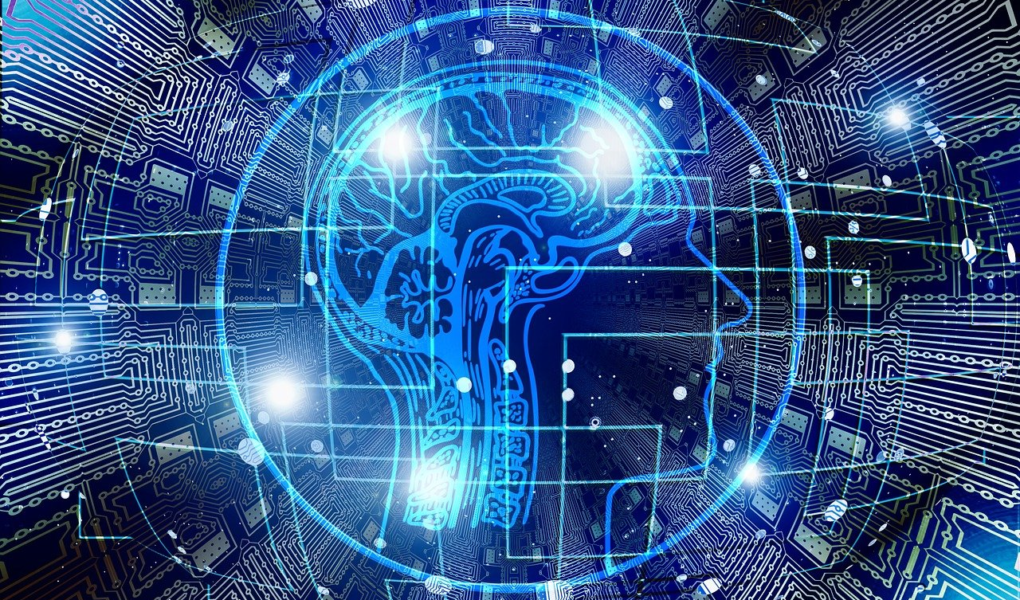It’s all over the news nowadays: Artificial intelligence (AI) will soon replace humans in virtually every job imaginable. Some technology experts have warned that AI-powered robots will take over blue-collar jobs in the construction and manufacturing industries. Other AI experts have described the possibility of generative AI models displacing lawyers, accountants, financial analysts, and other white-collar professionals.
However, such fears of AI replacing people across a broad range of occupations are overblown. Like with other sophisticated technologies that increase worker productivity, people will be able to protect their careers from AI by learning how to use AI-powered applications to become more efficient at the workplace. AI will also create entirely new categories of jobs that previously did not exist.
A Brief History of Automation in the Workplace

The world has seen many technological innovations that have fundamentally altered the way people worked, yet none of them have ever resulted in widespread unemployment and job scarcity. To the contrary, these innovations actually led to greater job opportunities for workers.
For example, the power looms of the 19th-century Industrial Revolution automated 98 percent of the cloth weaving process, making cloth cheaper and thus increasing the demand for cloth. Thus, the number of cloth weavers employed surged as factories hired more weavers to keep up with the growing demand for their products. The rise of automated phone systems in the 1970s allowed switchboard operators to become receptionists, and the growth of desktop publishing in the 1980s enabled typographers to become graphic designers. Workers who learned how to use technologies like power looms, automated phone systems, and desktop computers were able to land well-paying jobs and advance their careers in a world of constant change and innovation.
Even when one sector of the economy experiences a long-term decline in employment due to automation, other sectors will end up creating more than enough jobs to compensate for those losses. For example, the decline of agricultural jobs throughout the early 20th century was accompanied by an increase in manufacturing jobs, so there was no decrease in overall employment despite the changing nature of work. Similarly, the rise of advanced computer systems in the late 20th century led to a sharp decline in manufacturing jobs in Western Europe and Northern America as factories became increasingly automated. However, these computers also created jobs in engineering, medicine, and other specialized fields by improving worker productivity in these fields. Once again, workers who learned how to use new technologies like computers were able to survive and thrive in the new job market.
Similarly, there should be no reason to believe that AI would replace human workers on a large scale. While some manual or highly repetitive jobs will likely be lost, new jobs that involve creative thinking will emerge. Rather than getting their hands dirty in the workplace, employees will be able to design the products they seek to make and allow AI models to carry out the manual work.
People should also understand that there are still plenty of tasks where humans still outperform AI’s, often by large margins. For example, generative AI models cannot think creatively or perform managerial and executive tasks. Similarly, robotic AI models are still too expensive to be deployed on a large-enough scale to wipe out blue-collar jobs. Thus, there is still plenty of time to adapt to the ever-evolving 21st-century job market and develop the skills needed to master AI in the workplace.
Why Blue-Collar Workers Should Not Fear AI

It was once assumed that blue-collar jobs would be decimated by the rise of AI. Throughout the late 20th century, factories in Western Europe and Northern America laid off countless workers to replace them with industrial robots. Assembly lines became increasingly mechanized, thereby eliminating many manual jobs for blue-collar workers that were previously abundant.
With the rise of AI, economists and technology experts feared that the worst for blue-collar workers was yet to come. These experts warned that AI-powered robots would enable factories and warehouses to eliminate their last remaining workers and replace them with a fully automated system. Self-driving vehicles, also enabled by AI, would replace other blue-collar workers such as ridesharers and truck drivers.
However, it now turns out that 21st-century blue-collar workers do not have much to fear from AI, or even automation in general. It is quite expensive to build, deploy, and maintain robotic machinery in a factory or warehouse due to the large capital expenditures costs needed to make those investments. And robots, even AI-powered robots, are not necessarily better than humans at performing the manual and repetitive tasks that characterize blue-collar jobs, such as picking up boxes or attaching gears to a machine. Such concerns have caused large companies like Amazon and Tesla to rule out the possibility of developing 100-percent automated factories and warehouses anytime in the near future. In fact, as of 2020, only 1.3 percent of U.S. firms use robots.
Thus, blue-collar workers should not fear the possibility of widespread unemployment due to AI, robotics, and automation. Factories, warehouses, and other blue-collar workplaces have been slowly getting more automated with each passing decade, but the job gains enabled by new innovations and increased productivity have always outpaced the job losses caused by automation.
Why White-Collar Workers Should Not Fear AI

Although fears of AI replacing blue-collar workers en masse have largely decreased in recent years, they have been supplanted with concerns of AI taking over white-collar jobs in areas like law, finance, journalism, and software development.
In recent years, AI developers at Google, OpenAI, Anthropic, and other tech companies have released generative (or gen) AI models that produce text (e.g., Bard, ChatGPT, Claude) or images (e.g., DALL-E, Midjourney, Stable Diffusion). Economic experts have warned that these gen AI models could displace white-collar workers by automating jobs and occupations that require intellectual or organization skills like accounting, mathematics, data entry, financial analysis, or administrative oversight. For example, an analysis by Goldman Sachs predicted that about 300 million full-time jobs worldwide could be lost due to AI-enabled automation, with law, engineering, and office work being some of the hardest-hit professions.
However, such fears of AI eliminating white-collar jobs have been overblown. A study conducted by the Organisation for Economic Co-operation and Development (OECD) revealed that, among jobs that require strong digital skills, there was a strong correlation between AI exposure and employment growth from 2012 to 2019. White-collar workers with good digital skills are better able to take advantage of the productivity improvements enabled by AI, which enables them to obtain greater employment opportunities. Thus, AI may actually lead to more white-collar jobs that involve designing or operating AI models and systems.
What People Can Do to Enhance Their Careers in the Age of AI

Ultimately, the ability to use AI will be the one factor that will determine whether people will keep or lose their jobs in the age of AI. Rather than directly supplanting humans in the workplace, AI will make workers more productive, but only if they know how to use it. For example, a doctor who knows how to use an AI cancer diagnosis application will become more productive and be able to advance his or her career, but a doctor who fails to master the necessary AI skills of the near future will fall behind and eventually be driven out of the job market.
One estimate made by economic experts predicts that AI will create 97 million new jobs while destroying 85 million, ultimately leading to net gains in human employment. These new jobs will require employees who are adept at using or developing AI for productive purposes.
Some AI jobs will be technical and make use of skills related to programming, machine learning, or data science. These jobs may require people to know at least one programming language used to develop AI models, including Python, Java, C++, Julia, R, or Scala. They often require employees to design neural networks or deep learning models, so it is important to learn about the technical aspects of AI architecture in order to obtain such a job. Other important skills that may be needed for a technical job in the field of AI include data engineering, data analytics, and a strong understanding of statistics and linear algebra.
Other AI jobs will involve operating an AI-powered application to make it act in a productive manner. Examples of people with these kinds of jobs may include lawyers using AI to produce legal documents, journalists using AI to write articles, or graphic designers using AI to make cover pictures for books or websites. These AI jobs require people to be creative, articulate, precise, and understandable in their communications.
In conclusion, every individual who can master AI skills will have the ability to survive and thrive in the rapidly changing job market of the 21st century. It is never too early to begin learning vital AI skills that will allow workers to become more productive and advance their careers in the dynamic age of AI.




